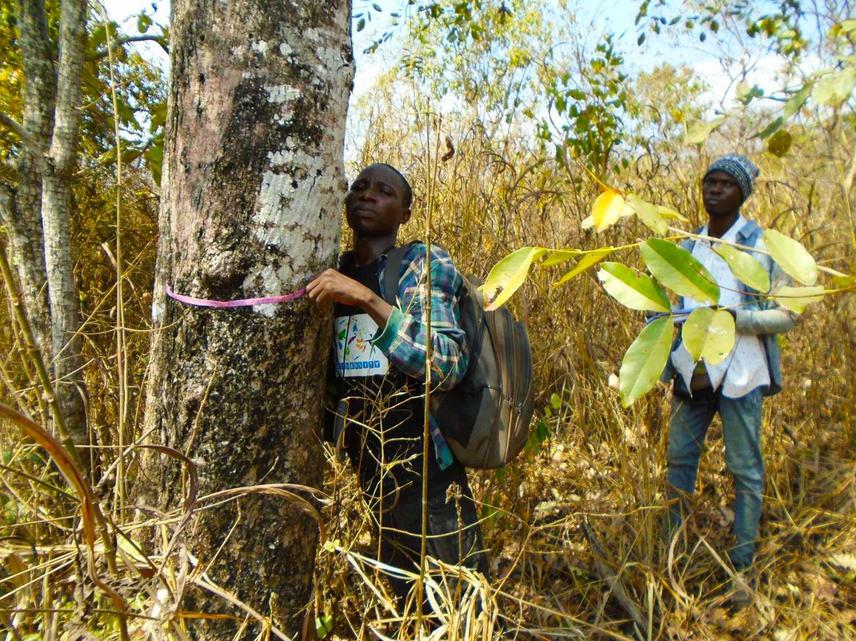Polycarpe Boris Yehouenou Tessi
Other projects
17 Oct 2022
Conservation and Enhancement of the Biodiversity of the Dogo-Ketou Region (Benin) and Empowerment of Local Communities through Nature-Based Solutions
In Benin, Dogo-Ketou Classified Forest (DK-CF) is an example of the limits of the effectiveness of protected areas in the conservation of forest resources. The causes of deforestation of the Dogo-Ketou Forest are driven by population growth, intensive harvesting of forests for charcoal production, in other words, for subsistence. The mode of exploitation made by the local community is not sustainable and merit intervention to avoid the disappearance of this valuable genetic resource space. The project is intended to contribute to DK-CF biodiversity conservation through the promotion of agroforestry practices, participatory reforestation schemes using native species, and awareness-raising activities.

Trees measurement by the field team.
The need to feed a growing population and the effects of global climate change are putting further pressure on natural resources, mainly forests in which the local community relies on as the main source of subsistence. In Benin, despite the fact that many forests have the status of protected areas, they are still under pressure from the local community. Dogo-Ketou Classified Forest (DK-CF) is in a very advanced state of degradation with an increase in fraudulent logging. The locality hosting this forest is known for one of the most charcoal producers in the country. It is an important source of income for the natives. The mode of exploitation made by the local community is not sustainable and merit intervention to avoid the disappearance of this valuable genetic resource space but with the implication of the natives in the management. Recent study analyzed the NPTFs used by the local population with focus villages around the DK-CF area in southern Benin. A total of 78 plant species were harvested by the local people. Among those species, some have the status of threatened species. Their availability is increasingly compromised by overexploitation, deforestation and climate change.
Human‐modified systems come as innovative ones necessary to be more understood attaining biodiversity conservation goals. Then, the assessment of the effect of human disturbance on the population structure of those species will be tools that can be incorporated in new policy development for the future management of these tree species populations. The project is intended to contribute to DK-CF biodiversity conservation through the promotion of agroforestry practices, participatory reforestation schemes using native species, and awareness-raising activities.
The objectives are:
(i) investigation and description of population dynamics and structure of the most important NTFPs of the forest in relation to the degree of anthropogenic disturbances.
(ii) Evaluation and promotion of different agroforestry practices in the region;
(iii) restoration of deforested and degraded forests with a view to restoring the forest ecosystem through natural regeneration or tree planting.
(iv) Work closely with communities to develop alternative livelihood activities;
(v) Execution of forest protection and conservation awareness campaign in the region.